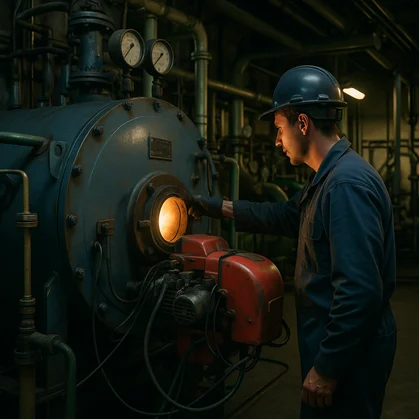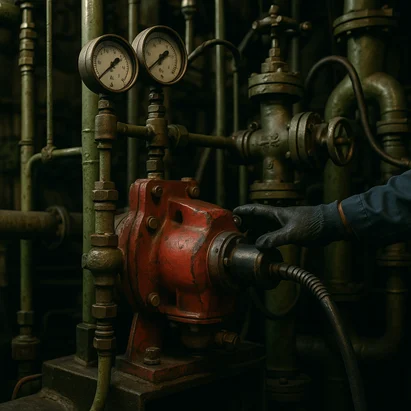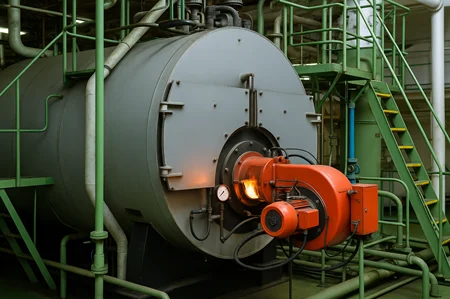Handling Flame Failure or Fuel Pump Trips Without the Panic
Let’s be honest. When the boiler trips unexpectedly and the flame goes out, it can feel like everything suddenly stops around you especially if you’re at sea and steam is needed for fuel heating or cargo operations.
The auxiliary boiler is one of those things that works quietly in the background until something goes wrong. Then suddenly, it’s all hands-on deck.
Why Does the Flame Fail?
A flame failure basically means the burner flame has gone out unexpectedly.
Right away, the boiler’s safety systems kick in and shut off the fuel supply to prevent a build up of unburnt fuel which could be dangerous if ignited later.
Here’s what usually causes it:
- You might be dealing with low fuel pressure or an airlock in the line.
- Maybe the burner nozzle is dirty or blocked.
- The spark plug or ignition transformer could be faulty
- Sometimes, the flame eye or photocell just isn’t detecting the flame properly.
- Or maybe there’s low atomizing air or steam pressure.
- And don’t forget water contamination in the fuel oil can mess things up too.

What To Do If the Flame Fails
Step One: Stay calm and acknowledge the alarm.
The boiler will trip by itself which is what it’s supposed to do.
Silence the alarm and let the duty engineer or officer know what’s happening.
Step Two: Don’t just press reset.
It’s tempting, especially when things are busy.
But never restart the boiler without checking.
Treat it as a serious safety warning.
Step Three: Find the cause.
Check the fuel oil pressure is it too low?
Inspect the burner check is there carbon build up or clogging?
Make sure the ignition system is working is the spark plug firing?
Look at the flame eye is it dirty or not functioning?
And check your atomizing pressure is it where it should be?
Step Four: Purge the furnace.
This is super important.
Before trying to start again, blow air through the furnace to clear out any unburnt fuel.
Your manual will tell you how long to purge usually a couple of minutes.
Whatever you do, don’t skip this step.
Step Five: Restart it safely.
Once everything’s fixed and the furnace is clean, go ahead and reset.
Follow your normal start-up sequence, step by step.
Watch the flame stabilize before moving on.
If the Fuel Pump Trips
Sometimes it’s the fuel pump that trips first which causes the flame to fail right after.
And yeah, it’s just as annoying.
It usually happens because of an electrical overload or a fault in the motor.
Maybe the suction filter is blocked.
Air might have gotten into the suction line.
The pump bearings could be worn.
Or the fuel might be at the wrong temperature or viscosity.
Here’s what to do:
- Check if the motor has tripped and reset it if needed.
- Inspect and clean the filters.
- Bleed any air out of the system.
- Look for leaks in the suction or return lines.
- Once that’s sorted, reset the motor and start the pump.
- Then go back to the boiler and restart it the right way with a proper purge.

Tips You’ll Thank Yourself For
- Always log these events. It helps during handovers and troubleshooting later.
- If you’re not 100 percent sure what went wrong, call the Chief and check.
- Keep the burner and filters clean it really does prevent a lot of issues.
- Test your flame sensors and safety trips during maintenance rounds.
- And never bypass interlocks. They’re there to keep you and the ship safe.
Final Thoughts
Things like flame failure or a pump trip are just part of working at sea.
It’s how you handle them that makes all the difference.
Stay calm.
Take your time.
Don’t jump to restart.
Find the root cause.
Purge the system properly.
And bring the boiler back online the safe way.
At the end of the day, it’s not just about the machinery you’re protecting the ship, the crew, and yourself.


